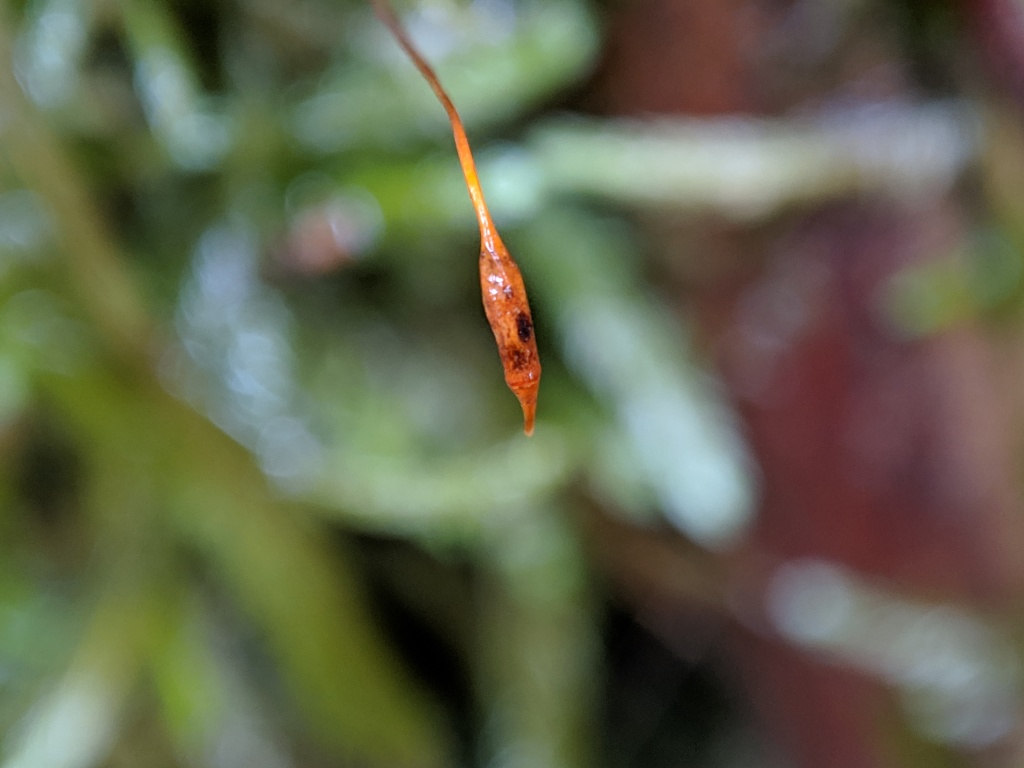Catagonium nitens subsp. nitens
Mats on soil or rocks, rarely tree ferns and tree bases. Stems 3–10 cm long, suberect or prostrate, simple or irregularly branched, orange to brown, with sparse brown rhizoids at base, with branches 1–2.5 mm long. Leaves erect spreading, scarcely altered when dry, oblong-ovate, 1–1.8 mm long, 0.3–0.6 mm wide, becoming smaller at branch apices, conduplicate, lustrous; apices acuminate or cuspidate, straight to decurved; costae usually absent or if present, indistinct, short and double; margins entire, plane, without a border; midlaminal cells linear, 85–160 μm long, 3–4 μm wide, becoming shorter and wider at extreme base and apex but not clearly differentiated, otherwise, similar throughout, smooth. Setae 12–34 mm long, reddish, often becoming yellow toward capsule, smooth, twisted anticlockwise. Capsules inclined, oblong, 1.5–2.5 mm long, brown, sometimes slightly curved. Operculum rostrate from conic base, 0.7–1.3 mm long.
GipP, OtP, WaP, Gold, EGU, WPro, HSF, HNF, OtR, Strz, MonT, HFE, VAlp. New Guinea, New Zealand, Subantarctic Islands other than Macquarie Island, Réunion, southern South America and southern Africa. Also QLD, NSW, ACT and Tas. High rainfall areas of the state including the Otways, Great Dividing Range and other major mountain ranges east of Melbourne, Strzelecki Ranges, Wilsons Promontory and the Errinundra Plateau through to Lind National Park in rainforest, wet sclerophyll forest and under or among rocks in the alpine and subalpine zones.
The mats of stems with lustrous conduplicate and complanate leaves makes this species immediately recognisable and hard to mistake for any other species in Victoria.
 Spinning
SpinningKlazenga, N. (2012). Australian Mosses Online. 26. Catagoniaceae. http://www.anbg.gov.au/abrs/Mosses_Online/Catagoniaceae.pdf.
